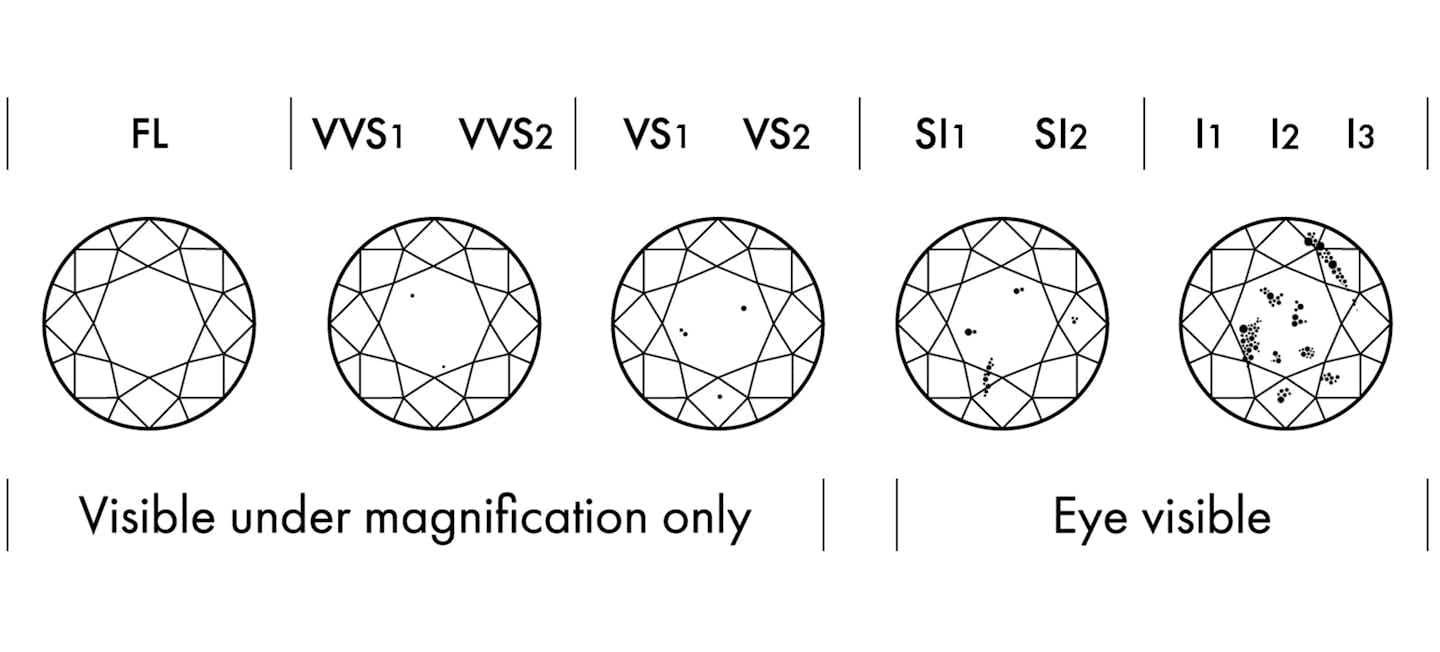
Diamonds are one of the most highly valued and sought-after gemstones in the world, prized for their beauty and rarity. However, not all diamonds are created equal. To ensure that consumers are getting what they pay for, diamond grading systems have been established to provide objective measures of a diamond’s quality.Diamond grading systems evaluate a diamond’s four primary characteristics: carat weight, colour, clarity, and cut. The combination of these characteristics determines a diamond’s overall quality and value.
Carat Weight:
Many often confuse the diamond carat with the diamond size, but in reality, the carat is the weight of a diamond which then can give an idea of the diamond size. When a specialist is analysing the carat of a diamond, they will be able to weigh with extreme precision up to the 5th decimal place.One carat equals 200 milligrams. Larger diamonds are rarer and therefore more valuable. However, the carat weight alone is not an indicator of a diamond’s quality, in fact, this is one of the lowest priorities in terms of quality.
Colour:
Colour is determined by how colourless a white diamond is. Diamonds are graded on a scale which starts with a D which is completely colourless, all the way to Z which has a yellow or brown tint to them. In order for a gemologist to identify the colour, diamonds are placed in a viewing environment and are then able to compare diamonds with previous records.Due to the colour being subjective, the GIA will often have multiple graders in order to get a more accurate reading. The less colour a diamond has, the more valuable it is. However, the colour grade also depends on the diamond’s shape, as some shapes can hide colour more easily than others. For example, if you were choosing an oval diamond for
engagement rings, then anything over a G would show too much colouring.
Clarity:
Clarity is measured by how flawless they are internally and externally. Diamonds can have internal flaws called inclusions and external flaws, known as blemishes. It is extremely rare to have completely flawless diamonds, but most diamonds’ flaws are only visible under a microscope. The clarity grade evaluates the number and severity of these imperfections, with higher grades indicating fewer inclusions and blemishes.The highest grade is Flawless (FL), followed by Internally Flawless (IF), Very Very Slightly Included (VVS1 and VVS2), Very Slightly Included (VS1 and VS2), Slightly Included (SI1 and SI2), and Included (I1, I2, and I3).
Cut:
Cut is a grading for how well the diamond has been cut. The cut influences the way in which light captures the light and sparkles. Many
vintage earrings and rings do not have as much sparkle due to the cutting methods being different. Cut is graded from excellent to poor and are determined by each of the facets of the diamond and the proportions of them. The cut of a diamond refers to its proportions, symmetry, and polish, which determine its brilliance, fire, and scintillation. The cut grade evaluates how well a diamond reflects and refracts light, with higher grades indicating better light performance.
 Diamonds are one of the most highly valued and sought-after gemstones in the world, prized for their beauty and rarity. However, not all diamonds are created equal. To ensure that consumers are getting what they pay for, diamond grading systems have been established to provide objective measures of a diamond’s quality.Diamond grading systems evaluate a diamond’s four primary characteristics: carat weight, colour, clarity, and cut. The combination of these characteristics determines a diamond’s overall quality and value.
Diamonds are one of the most highly valued and sought-after gemstones in the world, prized for their beauty and rarity. However, not all diamonds are created equal. To ensure that consumers are getting what they pay for, diamond grading systems have been established to provide objective measures of a diamond’s quality.Diamond grading systems evaluate a diamond’s four primary characteristics: carat weight, colour, clarity, and cut. The combination of these characteristics determines a diamond’s overall quality and value. Diamonds are one of the most highly valued and sought-after gemstones in the world, prized for their beauty and rarity. However, not all diamonds are created equal. To ensure that consumers are getting what they pay for, diamond grading systems have been established to provide objective measures of a diamond’s quality.Diamond grading systems evaluate a diamond’s four primary characteristics: carat weight, colour, clarity, and cut. The combination of these characteristics determines a diamond’s overall quality and value.
Diamonds are one of the most highly valued and sought-after gemstones in the world, prized for their beauty and rarity. However, not all diamonds are created equal. To ensure that consumers are getting what they pay for, diamond grading systems have been established to provide objective measures of a diamond’s quality.Diamond grading systems evaluate a diamond’s four primary characteristics: carat weight, colour, clarity, and cut. The combination of these characteristics determines a diamond’s overall quality and value.